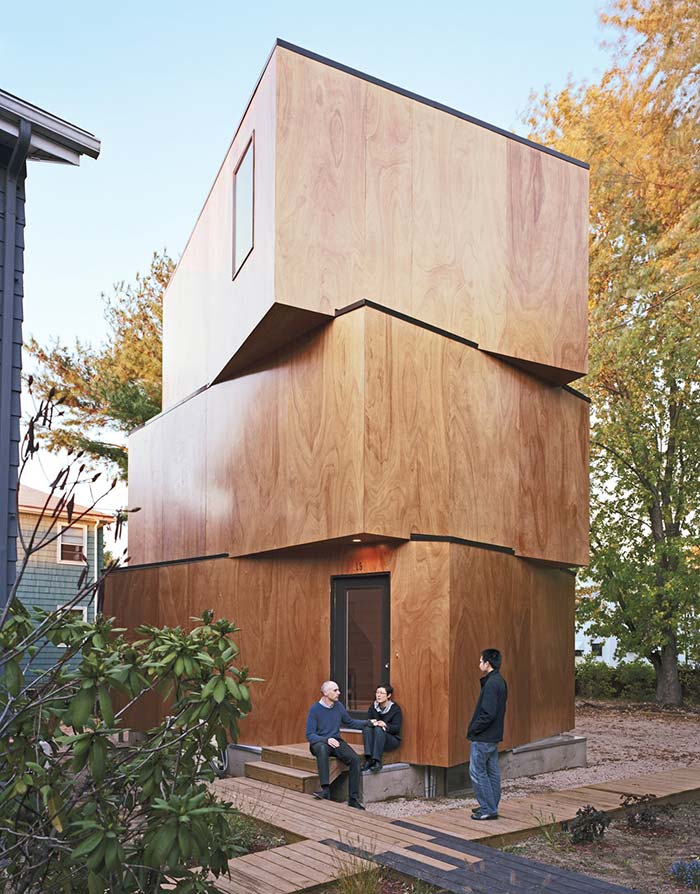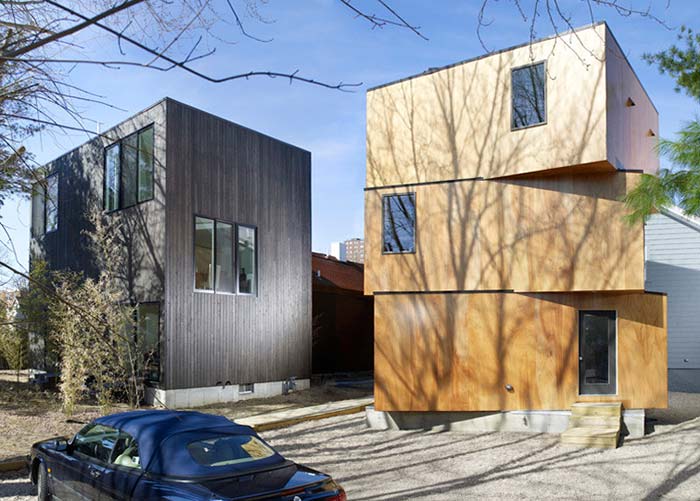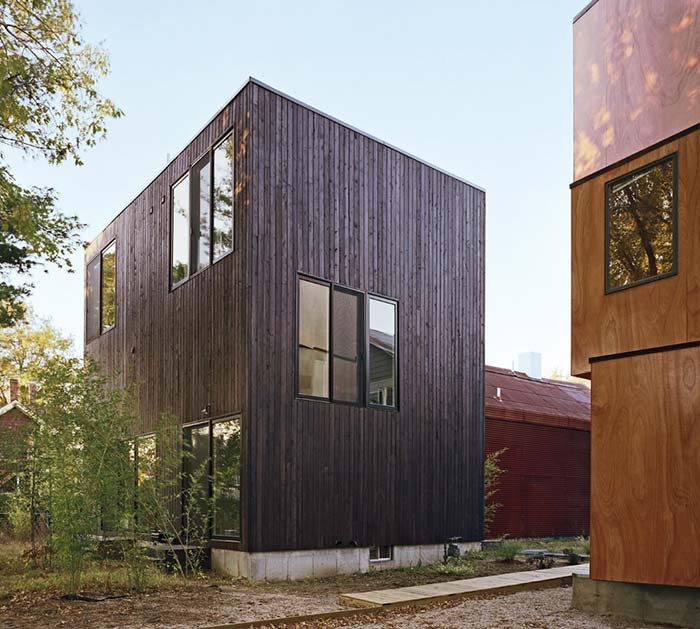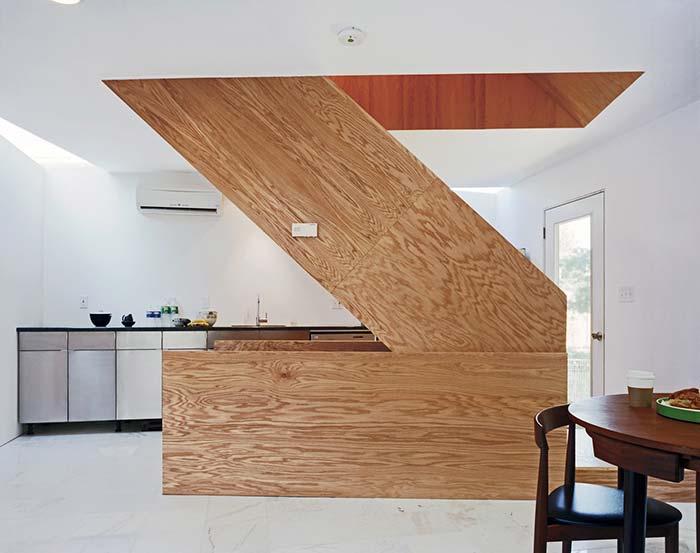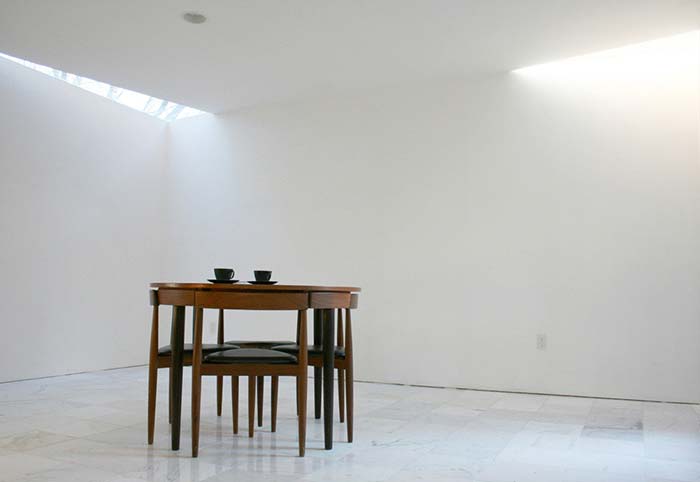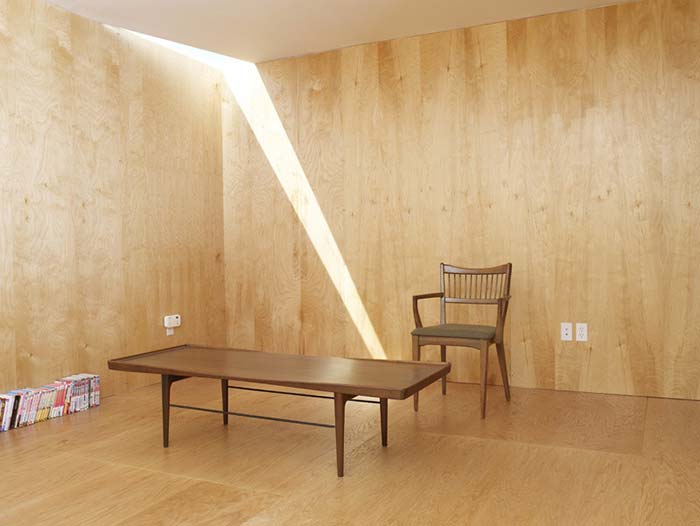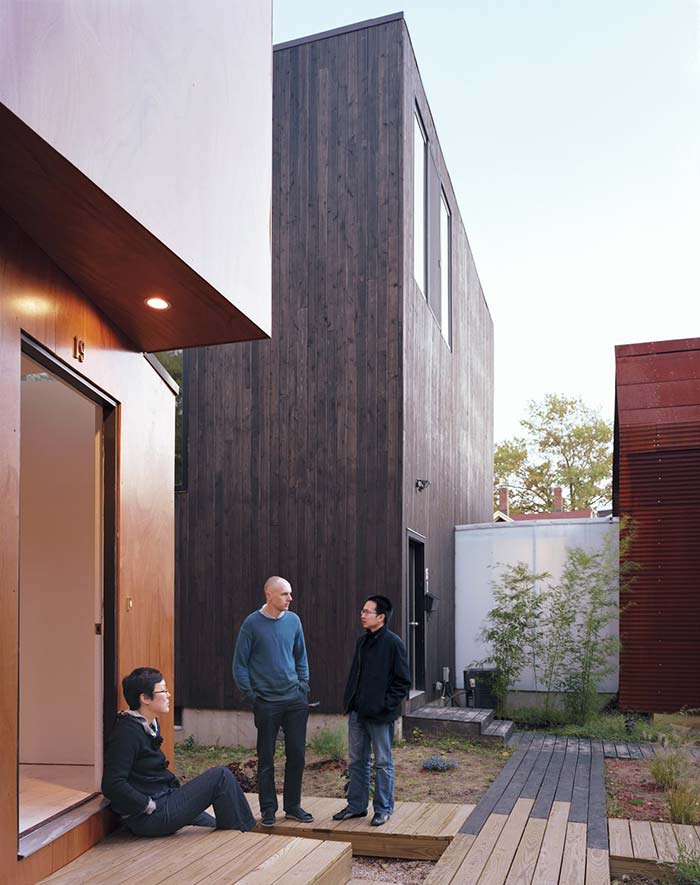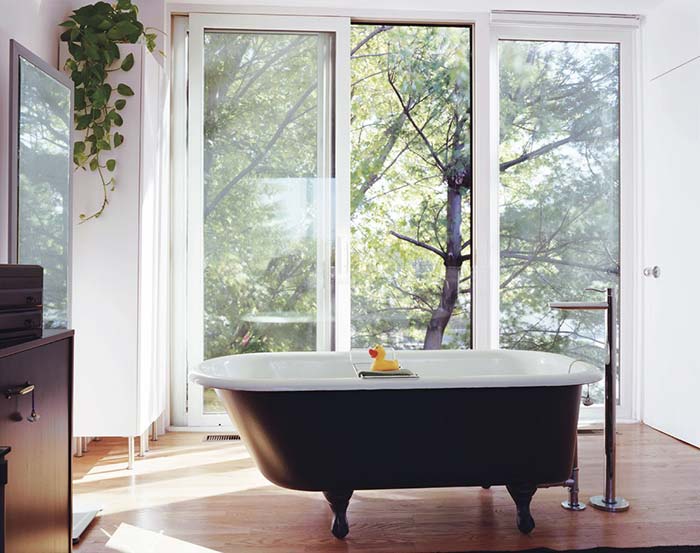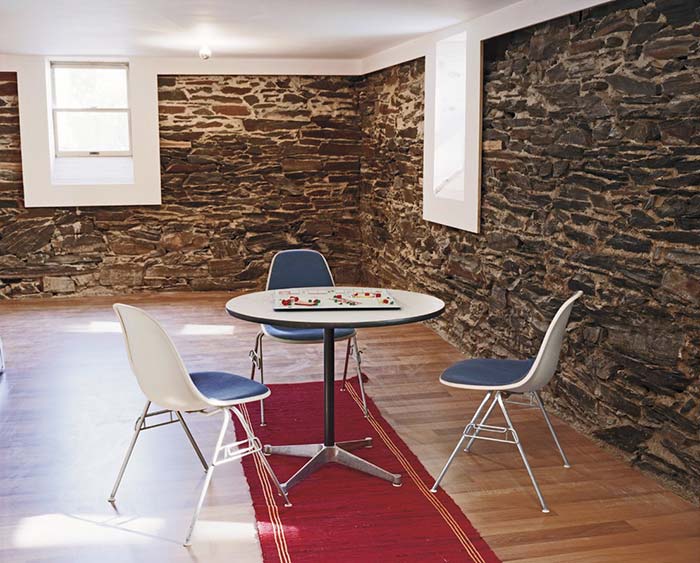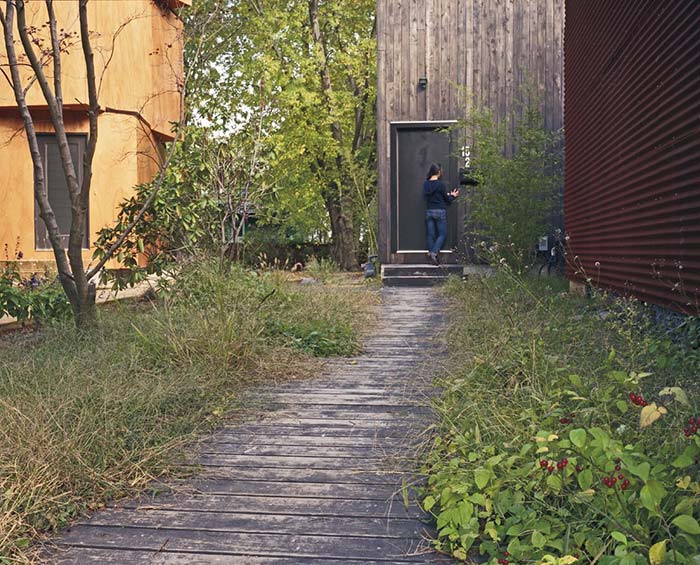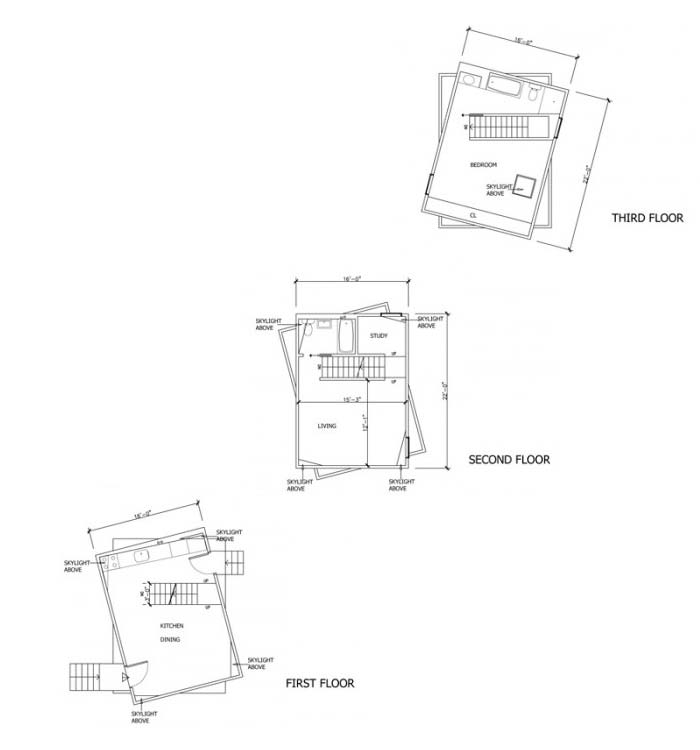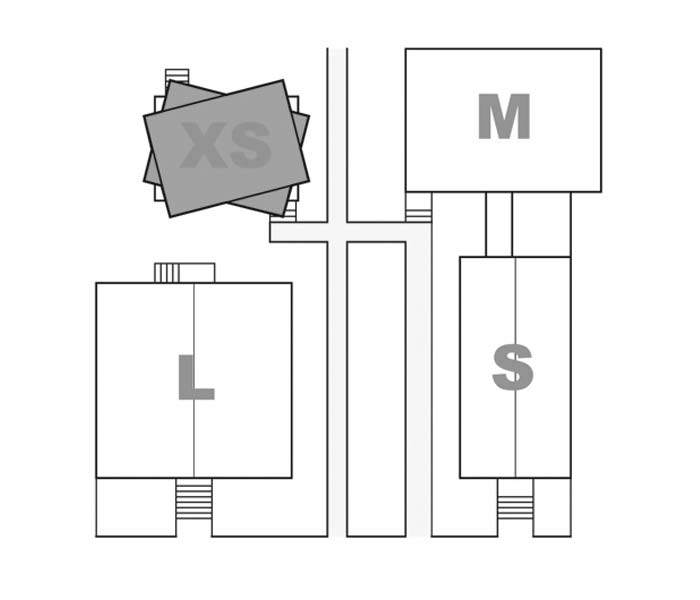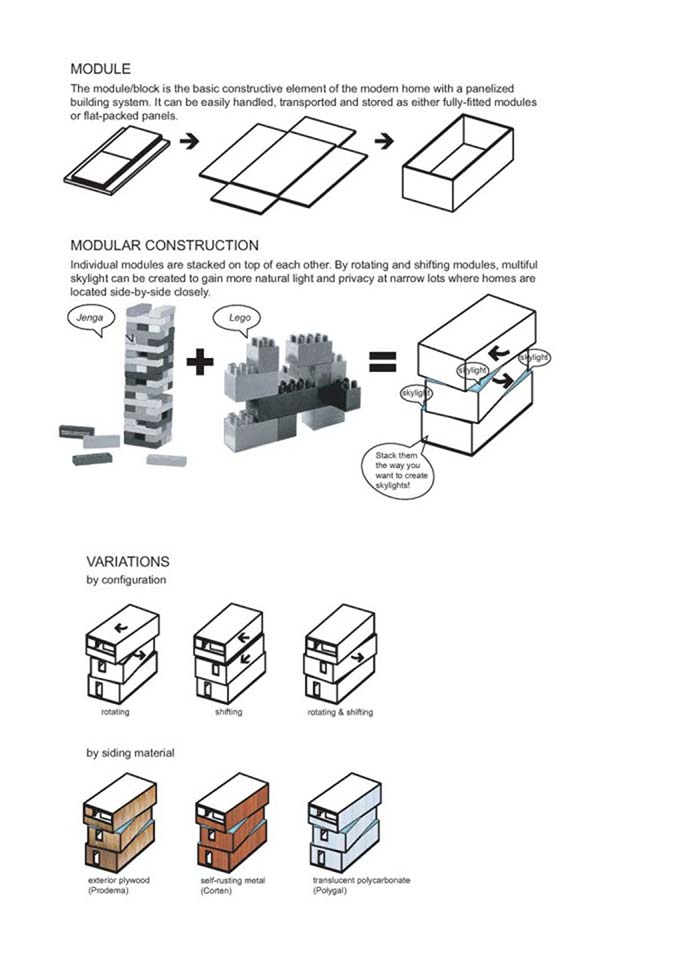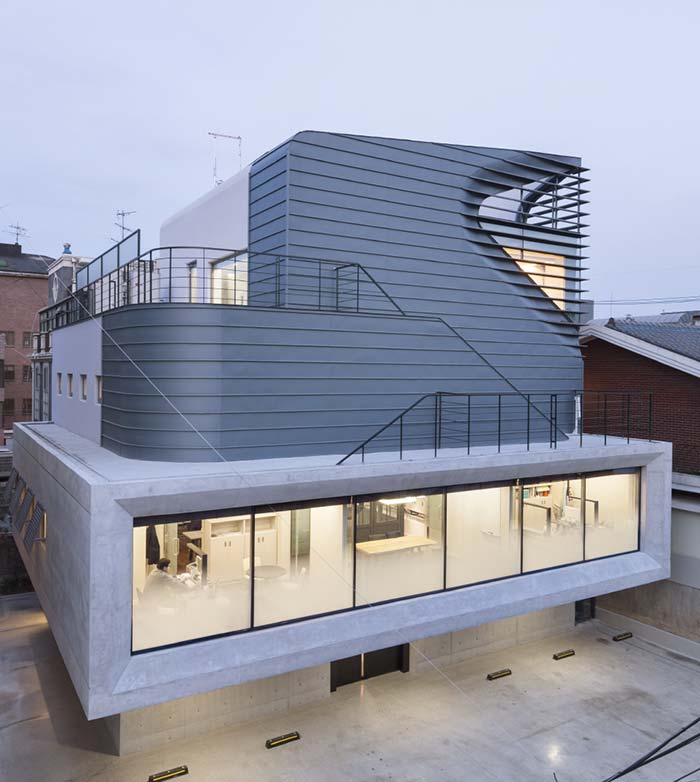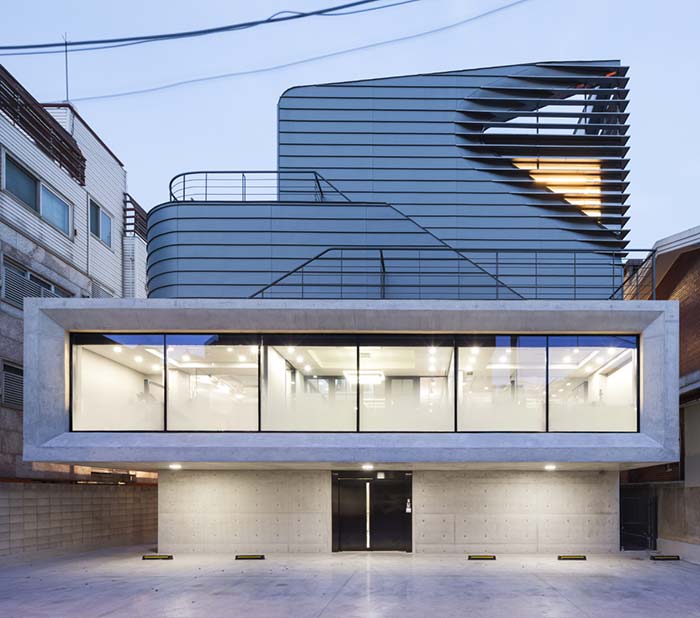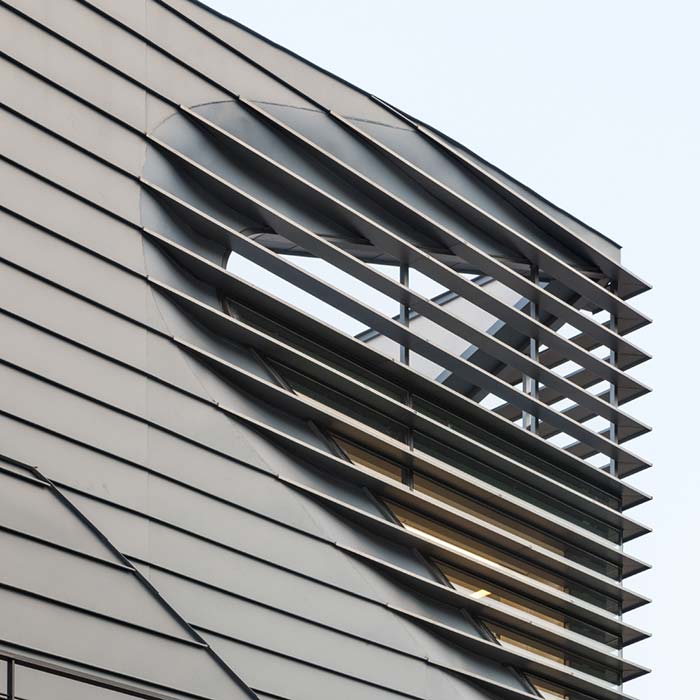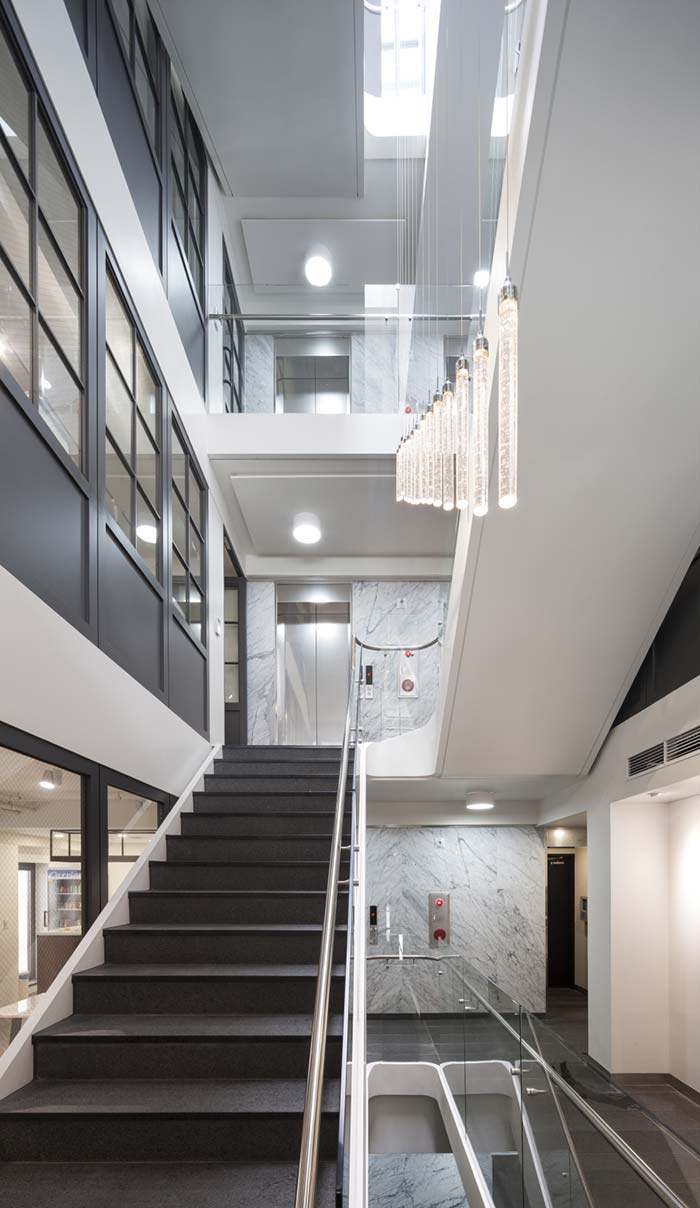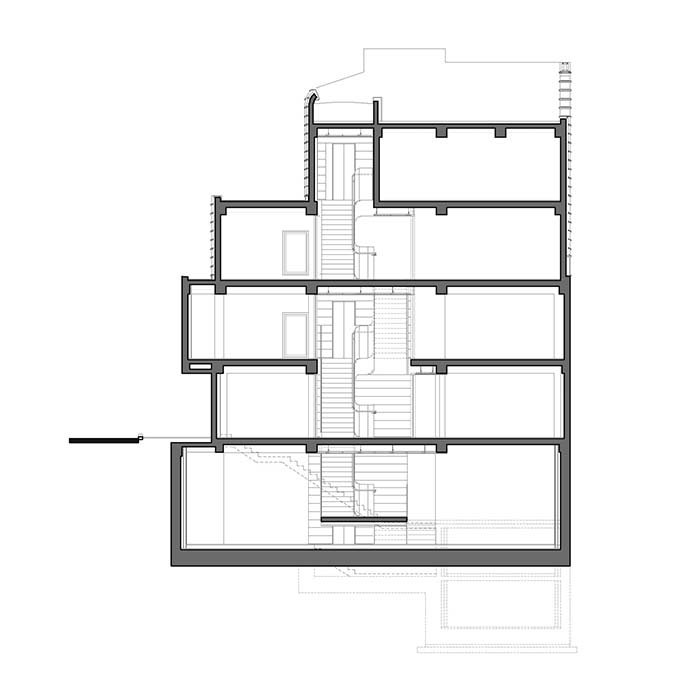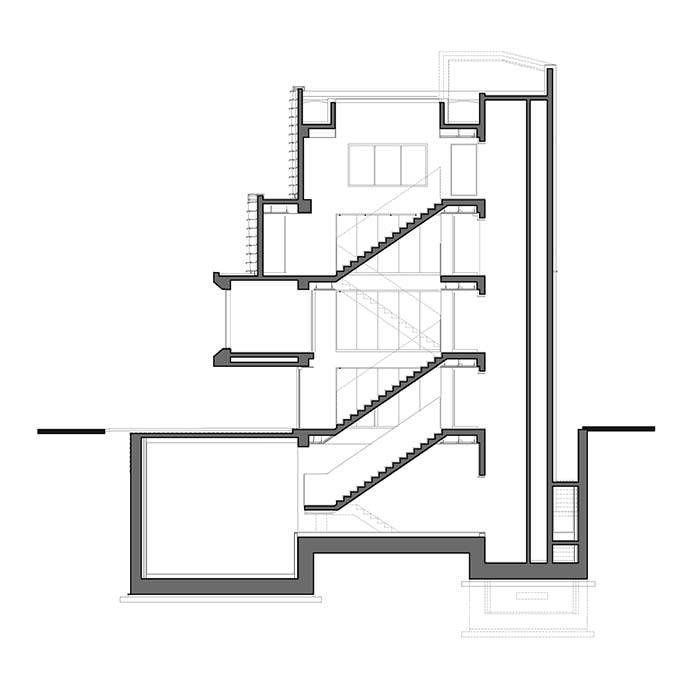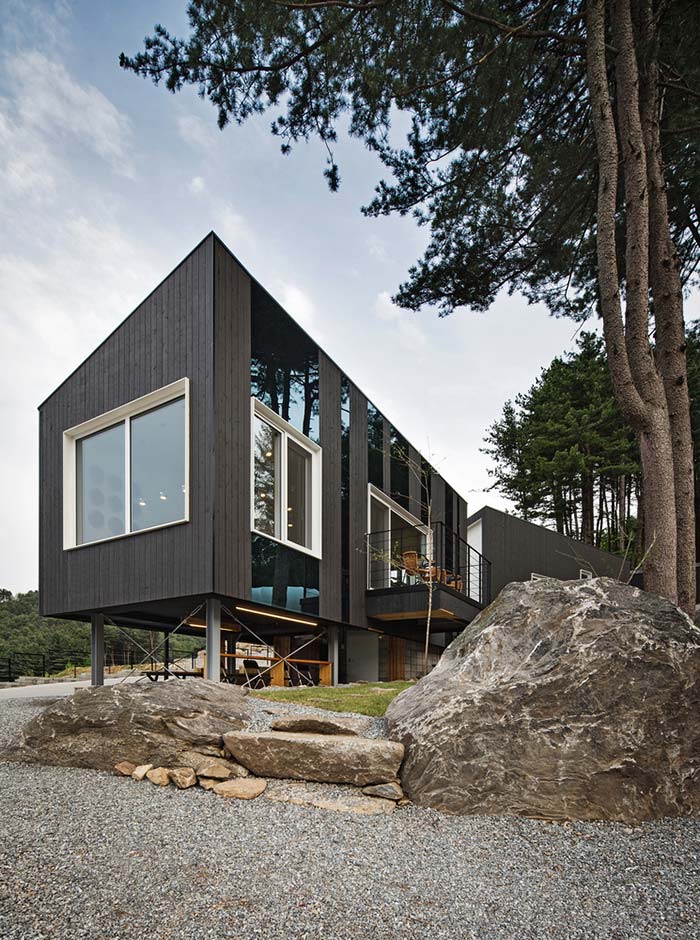
Ga-Pyeong region is located outskirts of Seoul. The site is famous for Arboretum, pine forest and mountains with rocks. The project embraces these characters of region. Likely, to other places, pine trees and large Rocks were easily found on the site. We pursue to express the atmosphere of the site character on our master plan.
When people visit the site, they should experience the nature as itself and should not be disturbed by destructed nature. The site is located on the edge of pine forest, which has slope height difference of 25 meters from the south to north end. Area for glamping is on nature side. The buildings are positioned on the road side, as if they protect the camp site.
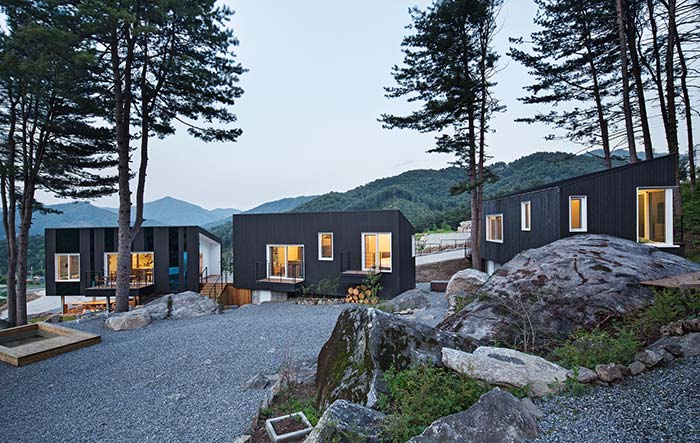
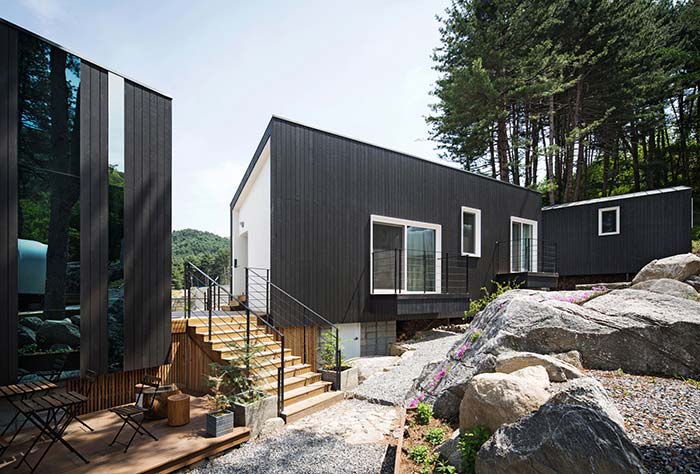
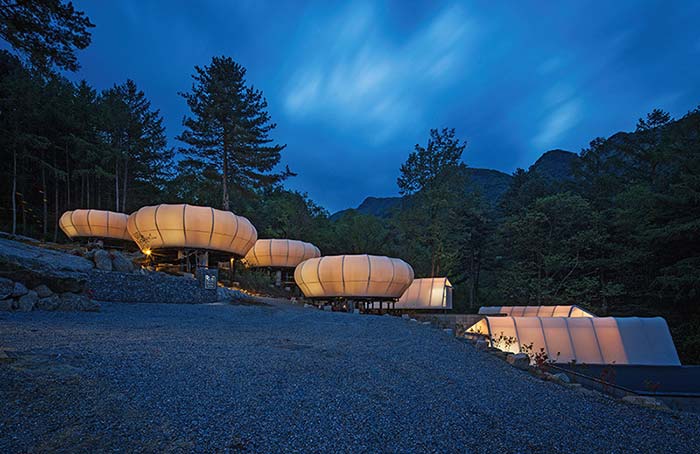
The buildings are divided into three volumes along the slope. The buildings are merge into the nature. The last volume on lowest side is used as welcome center. The facade of the building is combination of mirror and black cedar wood panels. The mirror panels embrace the surrounding nature.
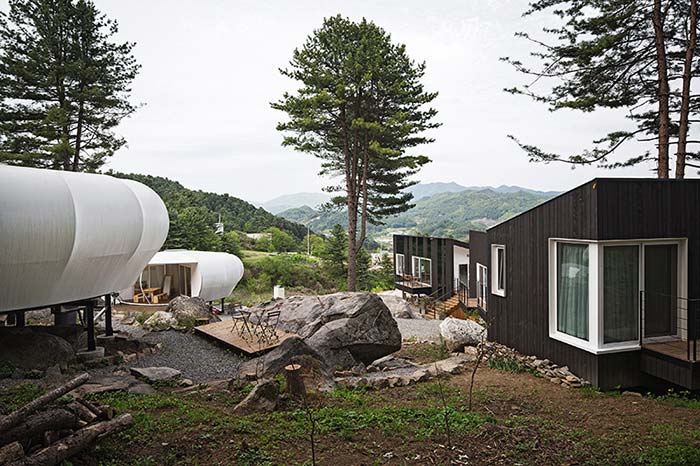
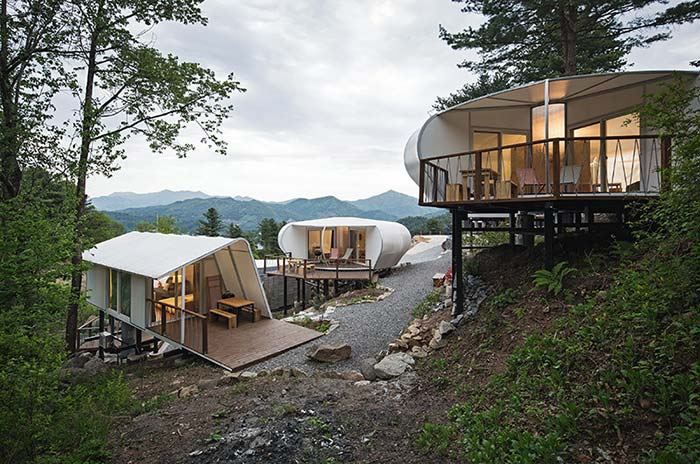
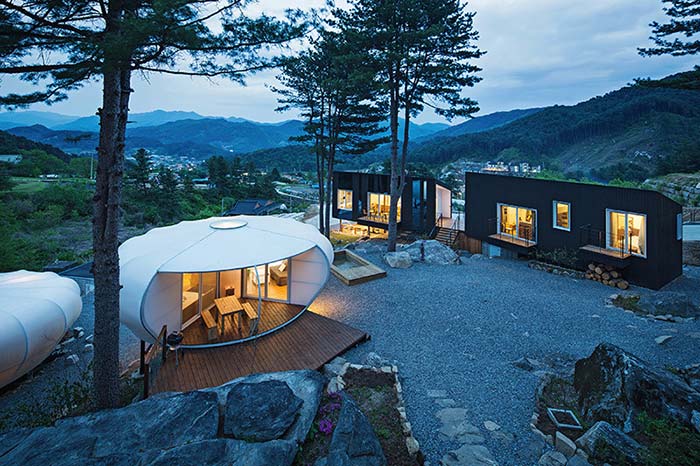
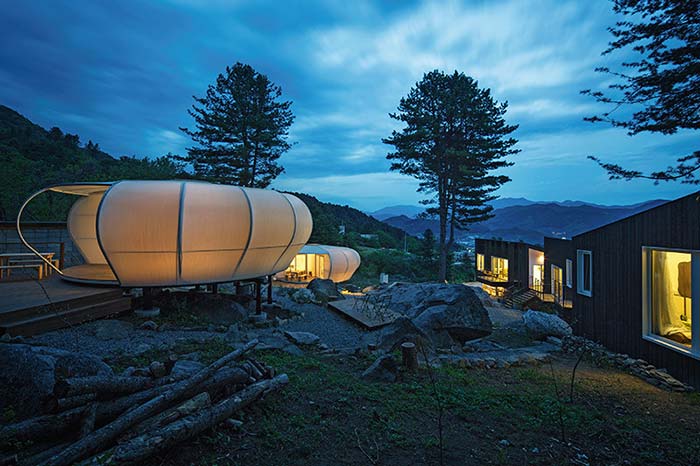
In this project, we introduced two glamping designs. They are 'rock flower' and 'dynamic triangle'. Both the buildings and the glamping are positioned along the inclined slope.
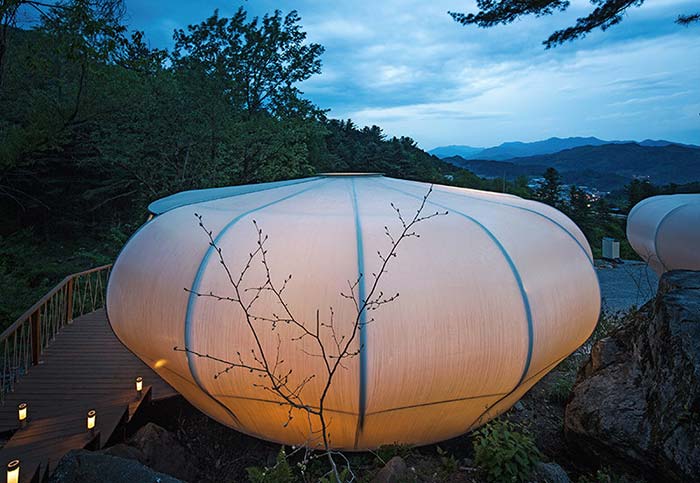
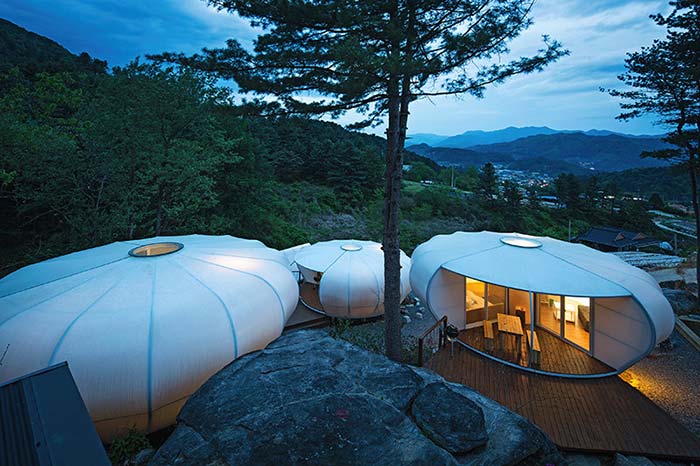
Glamping Concept
The word 'Glamping' was introduced over 10 years ago in Korea but its meaning was misappropriated in terms of quality and comfort. Instead of glamorous camping, low quality tents were installed and profiteered.
We came to a mind of creating Glamping, which gives people chance to experience the nature even closer, while providing place to experience uniquely designed architecture and comforts. A place, where nature, ecological values, comfort and modern design are equally balanced. This concept led to the creation of Glamping Architecture in Korea.
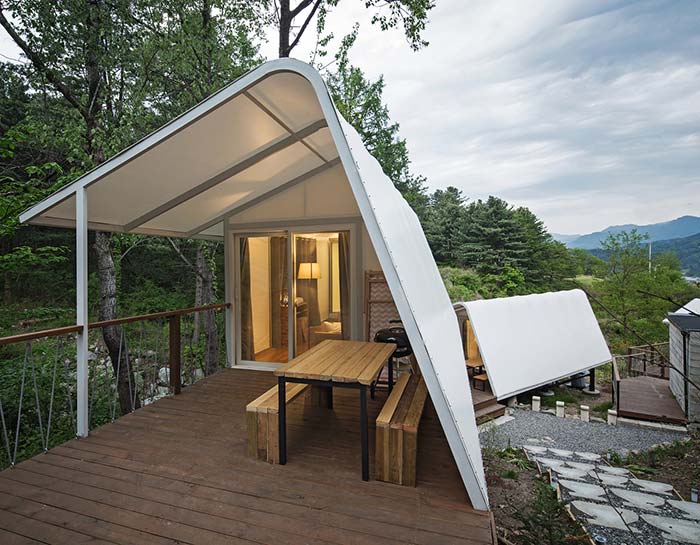
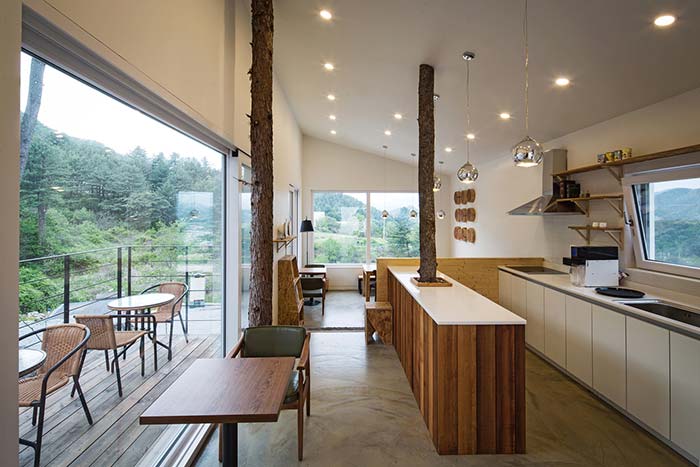
Glamping Description
The Glamping units are juxtaposed with a minimum change of the nature. We developed the Glamping unit and we named the design 'Rock Flower'. The basic concept of 'Rock Flower' was inspired from the rocks on the site.There were number of large rocks on the inclined steep hill and the flowers were grown between gabs.
The design intension is to express the glamping as flower buds on the rock.The 1.5m round window on top of the glamping helps to bring the sun light as well as experience the nature closer.The shape of the Landscape/nature has highest design character and we reflected this while planning the master plan.
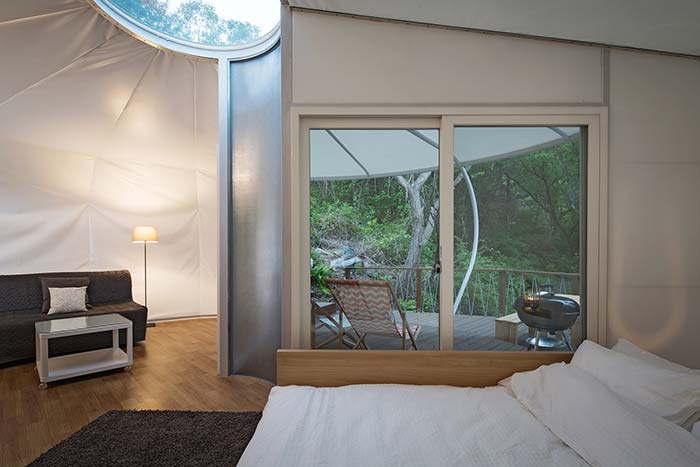
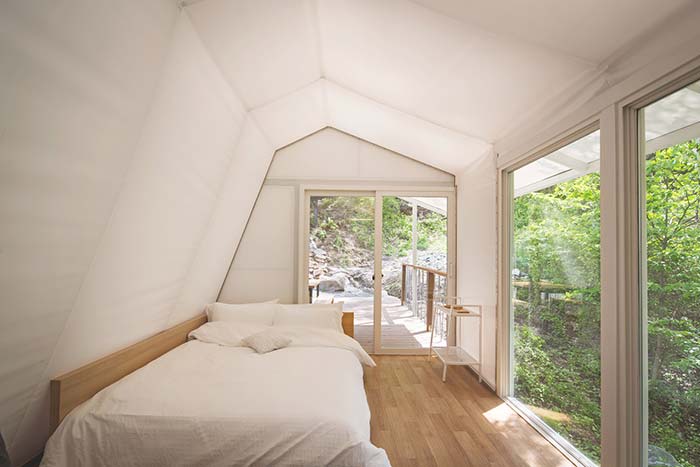
Glamping Form Finding
The shape and the position of the structures were carefully considered to give aesthetic emergence both during the day and the night time.When the form was designed, we considered the vertical structure spacing not to exceed the maximum width of the standard membrane size. This helped to reduce the cost as well as better control over visual effect of the joints between the surfaces. Because of the translucent character of the membrane, the shadow of the structure gave lantern effect, when projected on the surface.
Architects
: ArchiWorkshop
Location
: Ga-Pyung, Gyung-Gi-gun, South Korea
Project architects
: Hee-Jun Sim, Su-Jeong Park
Team
: YooMi Chae, KyungNa Kim
Area
: 180.0 m2
Project Year
: 2016
Manufacturers
: Serge Ferrari
Client
: Glamping on the Rock
Contractor
: TCM Global
Building A
: 60 sqm (Residential)
Building B
: 60 sqm(Residential)
Building C
: 60 sqm (Welcome center)
Glamping
: 56 sqm per unit
ArchiWorkshop

